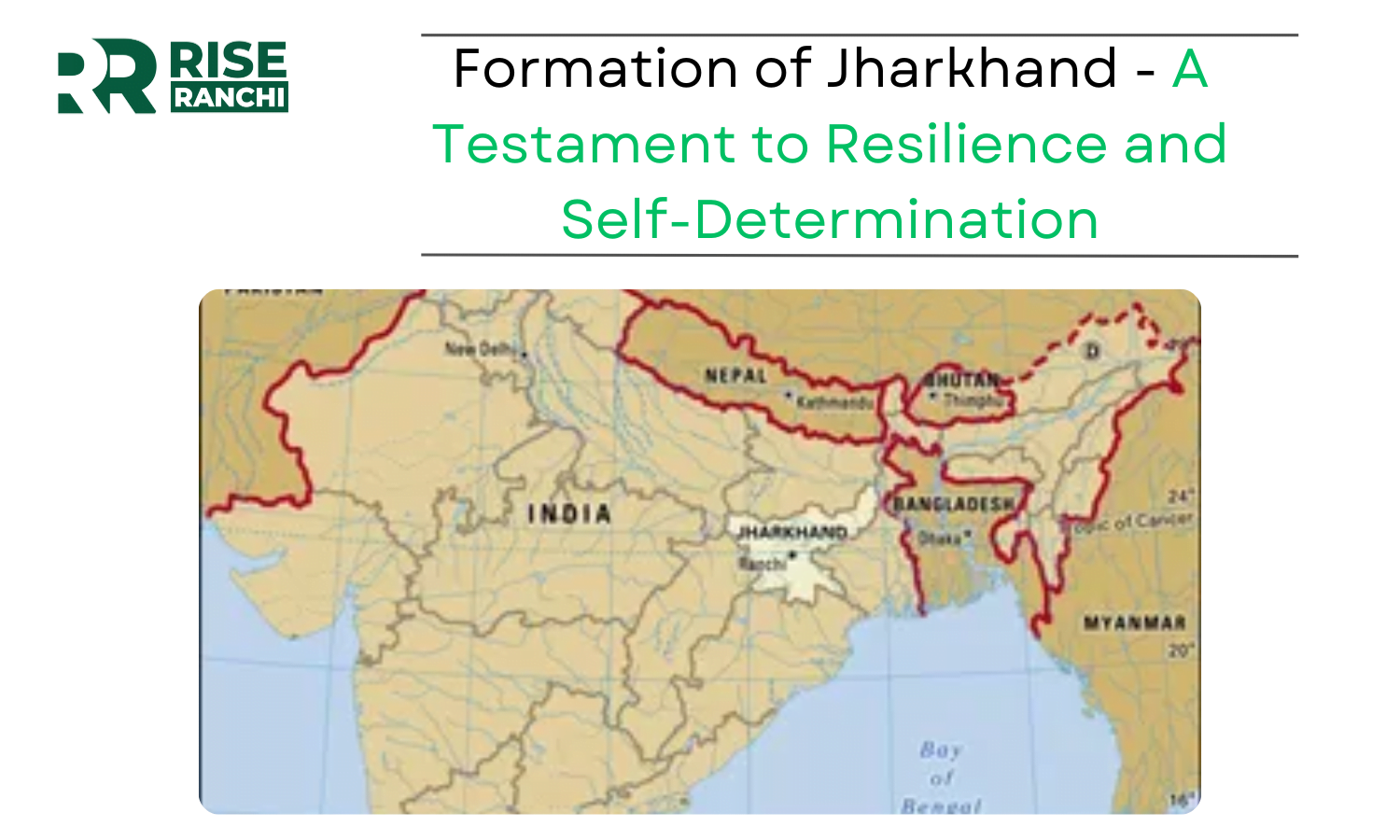Introduction
Jharkhand, a land steeped in natural beauty and rich cultural heritage, is one of India’s youngest states. Its formation as a separate entity was the culmination of a long and arduous struggle by its people for autonomy and recognition of their unique identity. The history of Jharkhand’s formation is a tale of resilience, political activism, and a quest for self-determination. This article delves into the historical journey of Jharkhand’s formation as a state.
Pre-Independence Era:
Jharkhand’s history dates back to ancient times when the region was inhabited by various indigenous tribes. The land was known for its abundant mineral resources, dense forests, and fertile soil. The tribal communities, including the Santhal, Munda, Ho, Oraon, and others, thrived in harmony with nature and developed rich cultural traditions.
During the British colonial rule, the area came under the administration of the British East India Company and was later included in the Bihar Province during British India. The tribal communities faced significant changes in their socio-economic landscape, including the introduction of land reforms that often disadvantaged them.
Post-Independence Era:
After India gained independence in 1947, the tribal communities of Jharkhand continued to face socio-economic disparities and land-related issues. Many of the tribal people were exploited by outsiders who sought to benefit from the region’s natural resources. The neglect of tribal welfare and the absence of proper land rights further fueled discontent and a sense of alienation.
The tribal communities also witnessed the emergence of political leaders who sought to address their concerns and advocate for their rights. These leaders became instrumental in articulating the demands for a separate state of Jharkhand.
Formation of Jharkhand Mukti Morcha (JMM):
In 1972, the Jharkhand Mukti Morcha (JMM) was founded by Shibu Soren and others. The formation of JMM marked the formal beginning of the statehood movement. JMM aimed to protect the rights and cultural heritage of the tribal communities and sought to create a separate state of Jharkhand within the Indian Union.
JMM adopted various strategies, including peaceful protests, rallies, and raising the issue in the national and state legislatures, to draw attention to the demands of the tribal people. Over time, the party gained support from different sections of society, including intellectuals, students, and other political groups.
The Bipartite Agreement of 1989:
The continuous agitation and growing public support for a separate state compelled the central government to engage with the leaders of the Jharkhand movement. In 1989, a Bipartite Agreement was reached between the government and the representatives of JMM. As per the agreement, the government committed to creating a separate state of Jharkhand by reorganizing Bihar and carving out the southern districts for the new state.
Despite the agreement, the actual process of state formation faced several setbacks. Changes in political leadership at the national and state levels, coupled with bureaucratic complexities, delayed the implementation of the agreement, leading to disillusionment among the people.
Struggles and Setbacks:
The delay in fulfilling the promises made in the Bipartite Agreement led to frustration among the people of Jharkhand. The statehood movement faced internal divisions and external challenges, including opposition from some political quarters and bureaucratic obstacles. As a result, sporadic protests, strikes, and demonstrations continued in the region, seeking immediate statehood for Jharkhand.
Creation of Jharkhand State:
The persistent efforts and determination of the people bore fruit on November 15, 2000, when the Parliament of India passed the Bihar Reorganization Act, 2000. This act paved the way for the formal creation of Jharkhand as India’s 28th state, comprising 18 districts from the southern part of Bihar.
The historic moment was celebrated with great enthusiasm and joy by the people of Jharkhand. The dream of autonomy and self-governance had finally materialized, and Ranchi was declared as the capital of the newly formed state.
Inauguration and Development:
The inauguration of Jharkhand as a separate state marked the beginning of a new chapter in its history. With a unique identity and distinct culture, the state began its journey towards development and progress. The government focused on infrastructure development, education, healthcare, industrialization, and welfare programs for the tribal communities.
The state government also made efforts to protect the rights and culture of the indigenous tribes and promote their inclusion in governance and decision-making processes. Despite facing challenges, Jharkhand made significant strides in various sectors and became a focal point for investment and development.
Challenges and Aspirations:
While Jharkhand achieved statehood, it faced various challenges in its path to progress. The state had to tackle issues related to poverty, illiteracy, malnutrition, inadequate healthcare facilities, and unemployment. There were also concerns about the equitable distribution of resources and benefits among different sections of society.
The state government, civil society, and various stakeholders worked together to address these challenges and create a roadmap for inclusive development. The aspirations of the people included sustainable growth, industrialization, empowerment of women and marginalized communities, and the preservation of tribal culture and heritage.
Conclusion:
The history of Jharkhand’s formation is a testament to the unwavering spirit and determination of its people. The struggle for statehood reflected their desire for autonomy, recognition, and socio-economic development. Today, Jharkhand continues to evolve and grow, embracing its rich cultural heritage while striving to create a better future for its people. As the state progresses, it remains a symbol of the triumph of democracy and the power of collective aspirations.














